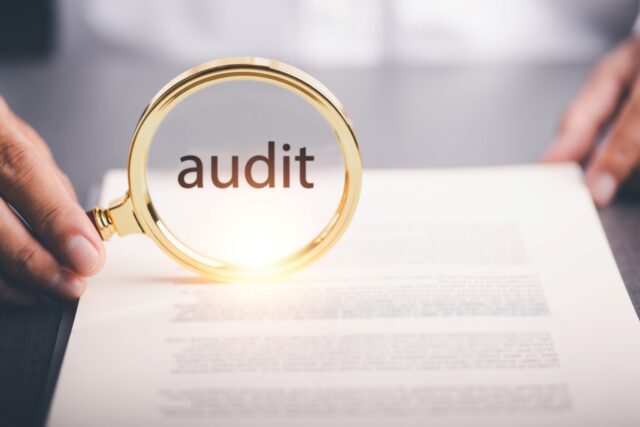In the ever-evolving landscape of digital marketing, maintaining an effective online presence is essential for driving traffic, improving search engine rankings, and increasing conversions. A content audit is a critical step in this process, allowing businesses to evaluate their existing content and identify areas for improvement. This blog will guide you through the steps to conduct an effective content audit focused on enhancing your SEO performance.

1. What is a Content Audit?
A content audit is a systematic evaluation of your website’s existing content. The goal is to assess the quality, relevance, and performance of each piece of content to determine what works, what doesn’t, and what needs to be updated or removed. By analyzing various metrics, you can develop a comprehensive strategy to improve your SEO and overall content effectiveness.
2. Why Conduct a Content Audit?
Conducting a content audit offers several benefits, including:
- Identifying high-performing content: Understand which pieces of content drive the most traffic and engagement.
- Spotting gaps in content: Find opportunities to create new content that addresses user needs and interests.
- Improving SEO: Optimize existing content for better search engine rankings and visibility.
- Enhancing user experience: Ensure your content is relevant, up-to-date, and aligned with user intent.
3. Steps to Conduct a Content Audit
1: Define Your Goals
Before diving into the audit, clarify your objectives. Are you aiming to increase organic traffic, improve user engagement, or enhance conversion rates? Establishing clear goals will guide your analysis and help you measure success after implementing changes.
2: Create a Content Inventory
Compile a comprehensive inventory of all the content on your website. This includes blog posts, articles, landing pages, videos, infographics, and any other relevant materials. You can use a spreadsheet to organize the following details:
- Title of the content
- URL
- Date published or updated
- Content type
- Word count
- Traffic data (page views, unique visitors)
- Engagement metrics (bounce rate, time on page, social shares)
Step 3: Evaluate Content Performance
Using tools like Google Analytics, SEMrush, or Ahrefs, assess the performance of each piece of content based on the following criteria:
- Traffic: Identify which content is driving the most traffic to your website.
- Engagement: Analyze metrics such as bounce rates, average time on page, and social shares to gauge user interest and interaction.
- SEO Performance: Check keyword rankings, backlinks, and overall SEO performance to determine how well each piece of content ranks in search engines.
Step 4: Analyze Content Quality and Relevance
Evaluate the quality of your content based on the following factors:
- Accuracy: Ensure that the information provided is accurate, up-to-date, and backed by credible sources.
- Relevance: Determine whether the content aligns with your target audience’s needs and interests.
- Readability: Assess the readability of your content, ensuring it is well-structured and easy to understand.
- Visual Appeal: Review the use of images, videos, and formatting to enhance the overall user experience.
Step 5: Identify Content Gaps and Opportunities
As you analyze your content, look for gaps and opportunities for improvement. Consider the following questions:
- Are there topics that are relevant to your audience that you haven’t covered?
- Is there outdated content that needs to be refreshed or rewritten?
- Are there high-performing keywords that you can optimize existing content for?
Step 6: Develop an Action Plan
Based on your findings, create a detailed action plan that outlines the steps you will take to improve your content. This may include:
- Updating existing content: Refresh outdated information, improve SEO elements (meta tags, headings, etc.), and enhance readability.
- Creating new content: Develop new pieces that fill identified gaps in your content strategy.
- Removing or consolidating low-performing content: If certain content doesn’t serve your goals, consider removing or consolidating it to streamline your website.
Step 7: Implement Changes and Monitor Performance
Once you’ve developed an action plan, start implementing the necessary changes. After making updates, continue to monitor the performance of your content using analytics tools. Assess how your changes impact traffic, engagement, and SEO performance to measure the effectiveness of your content audit.
4. Best Practices for Ongoing Content Audits
To ensure your content remains relevant and effective, establish a regular content audit schedule (e.g., quarterly or biannually). This ongoing practice will help you stay on top of trends, user preferences, and search engine algorithms.
Additional Tips:
- Collaborate with your team: Involve content creators, SEO specialists, and marketing teams in the audit process for a well-rounded perspective.
- Stay updated on SEO trends: Keep abreast of the latest SEO best practices and algorithm updates to inform your content strategy.
Conclusion
Conducting an effective content audit is a vital step in optimizing your website for SEO improvement. By systematically evaluating your existing content, identifying gaps, and implementing strategic changes, you can enhance user experience, drive organic traffic, and achieve your digital marketing goals. Remember, content is not a one-time effort but an ongoing process that requires regular evaluation and adaptation to ensure long-term success. Embrace the power of content auditing, and watch your SEO performance soar!


No responses yet